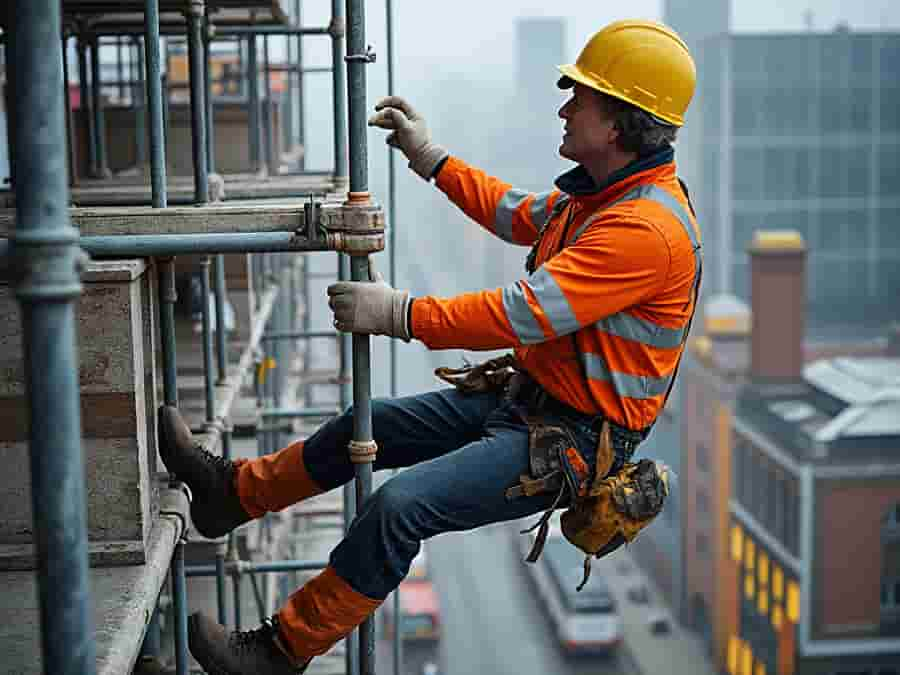The Health and Safety Executive (HSE) has published concerning new figures showing an increase in construction worker fatalities over the past year. The data, covering the period up to 31 March 2024, underscores the ongoing safety challenges in the sector and the critical need for improvement.
Construction Fatalities Rise Sharply
The construction industry saw 51 deaths from injuries on-site in 2023/24, a figure more than double that of any other sector. Agriculture, forestry, and fishing ranked second, with 23 recorded fatalities. Notably, construction worker fatalities accounted for over a third of the 138 work-related deaths across all UK industries.
Measured by the rate of fatal injuries, the construction sector reported 2.43 deaths per 100,000 workers, up from 2.1 in the previous year. While this rate remains lower than the 7.51 fatalities per 100,000 workers in agriculture, it still places construction as the second most dangerous industry in the UK.
Work-Related Ill-Health on the Rise
The HSE’s report also highlighted significant work-related ill-health challenges in construction. Between 2021/22 and 2023/24, an estimated 78,000 construction workers were affected, with over half suffering from musculoskeletal disorders. This equates to 2% of the UK construction workforce—a notably higher rate than the average across all industries.
Additionally, self-reported mental health issues, including stress, impacted approximately 14,000 workers during the same period. Although statistically lower than the average rate across all sectors, mental health concerns remain a pressing issue for the industry.
Tragic Fatalities Underscore Industry Risks
The personal stories behind the numbers illustrate the hazards faced by construction workers daily. Among the fatalities were Michael Jones, a 26-year-old worker at the Everton FC stadium project, and Charlie Harper, a 71-year-old drill worker at an HS2 site. Investigations revealed preventable causes, such as inadequate equipment security, emphasizing the need for stricter health and safety protocols.
Falls from height remained the leading cause of workplace deaths, with 50 fatalities in 2023/24. This was twice the number of deaths caused by being struck by moving vehicles, the second most common cause of fatal incidents.
Calls for Improved Safety Measures
HSE Chief Executive Sarah Albon acknowledged the UK’s standing as one of the safest places to work but stressed that these statistics highlight room for improvement. “We remain committed to ensuring people remain safe and healthy wherever work is taking place,” Albon said.
The Construction Leadership Council (CLC) echoed this sentiment, urging the sector to leverage data more effectively to improve safety outcomes. The CLC’s recommendations align with a broader industry push to adopt technology and foster a culture of proactive engagement with workers to identify risks early.
The Workers Union says…
“The rise in fatalities and persistent health issues in the construction industry serves as a stark reminder of the sector’s ongoing safety challenges. By adopting data-driven solutions, improving safety protocols, and addressing mental health concerns, the construction sector has an opportunity to make meaningful changes that protect its workforce.”




